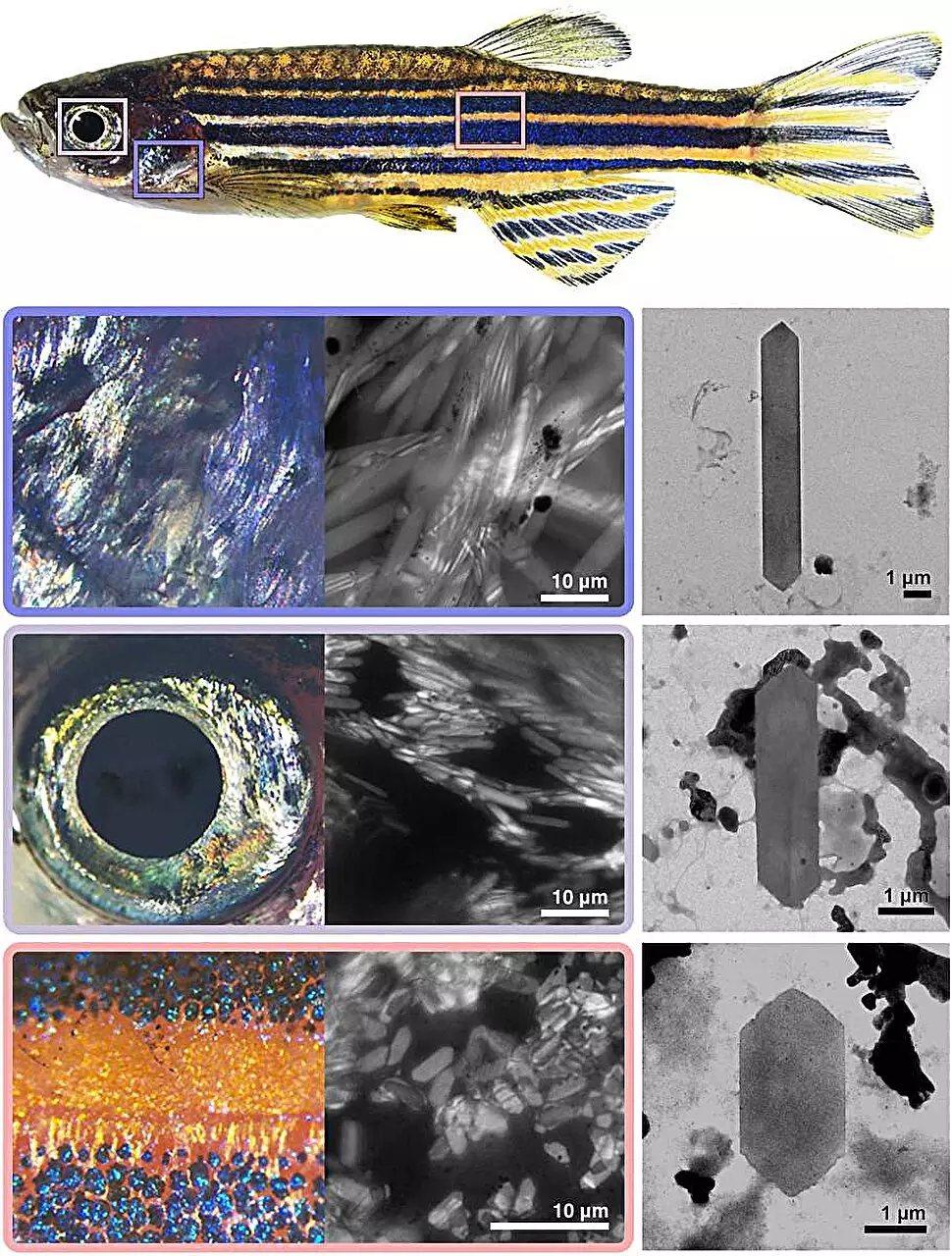When considering the most captivating phenomena in the natural world, the ability of various organisms to produce crystals stands out as particularly extraordinary. Fish, chameleons, and even certain crustaceans utilize these remarkable structures in different ways — from aiding in camouflage to regulating body temperature. However, the complexity of these natural crystals is often overshadowed by the more notorious narrative of crystal production as depicted in popular culture, particularly the infamous “Breaking Bad.” Contrastingly, the real-life mechanisms behind these natural crystals are not only fascinating but represent an intricate collaboration between biochemistry and genetics, offering a glimpse into the wonders of nature’s design.
At the core of this astonishing phenomenon lies the simple pairing of two essential molecules: guanine and hypoxanthine. These compounds, fundamental to the very structure of DNA and cellular function, serve as the building blocks from which an astonishing diversity of crystals arises. Research has indicated that the role of these crystals extends beyond mere structural integrity; they contribute to visual signaling, thermal regulation, and even protection against environmental hazards. Yet, the diversity seen in crystal shapes and functions across different species has long puzzled scientists.
The recent investigations spearheaded by researchers at the Weizmann Institute of Science aim to unravel this mystery. Particularly captivating in their study is the zebrafish, a small freshwater fish known for its striking appearance and abundant crystal formations throughout its body. The examination of these crystals not only highlights their aesthetic appeal but also opens a window into the underlying biological processes responsible for their varied characteristics.
An essential element of this research was observing the variations in crystal shape among different tissues in zebrafish. With techniques such as electron microscopy, scientists, led by Dr. Dvir Gur, discovered that crystals in the gills were long and slender, while eye crystals appeared rounder, and skin crystals further differed in size and shape. This discovery mirrors the meticulous balance a chef must strike when mixing ingredients to craft a dish, indicating that variations in molecular ratios directly contributed to the diversity of crystal structures.
Specifically, the ratio of guanine to hypoxanthine appears pivotal in determining crystal properties, echoing culinary principles where different combinations yield distinct flavors and textures. By manipulating these ratios in a laboratory setting, researchers could successfully recreate several types of zebrafish crystals, thereby demonstrating the significance of molecular balance in crafting the stunning visual and functional characteristics of these biological marvels.
However, the journey did not end with merely observing these crystals; the true challenge lay in decoding the molecular machinery enabling this production. Through the isolation of iridophores — specialized cells responsible for crystal formation — a clearer picture emerged. Insights revealed that these cells contain a unique set of enzymes that facilitate the synthesis of crystalline building blocks. Notably, the study identified a unique paradox: while these crystals showcased an abundance of specific enzymes, they simultaneously displayed lower levels of related enzymes.
This duality indicates a carefully orchestrated balance within the iridophores. Further investigation revealed that different enzyme expressions could lead to varying guanine and hypoxanthine ratios in the crystals, resulting in distinct physical structures. In fish, the presence of multiple enzymes for guanine synthesis emerged as a significant advantage, allowing these organisms to manipulate crystal formation without hindering other essential cellular functions.
Moreover, the researchers took their exploration a step further by engineering a zebrafish that could not express one of the pivotal enzymes, known as pnp4a. Observing the changes in crystal morphology provided compelling evidence of the critical role that enzyme balance plays in maintaining the integrity and uniqueness of crystal structures.
The quest to understand these crystallizing processes not only enriches our understanding of biological systems but also illuminates the broader implications of nature’s engineering principles. The interdisciplinary collaboration between biologists, materials scientists, and optical experts underscores the importance of integrating varied scientific perspectives to deepen our comprehension of complex biological phenomena.
The findings from this research extend beyond theoretical knowledge; they hold potential applications in biomaterials engineering, optoelectronics, and even the realm of synthetic biology. By mimicking nature’s methods of crystal formation, scientists could innovate new materials that incorporate similar properties or functions, harnessing the lessons learned from these natural processes.
Ultimately, this exploration of the wondrous capabilities of organisms like the zebrafish showcases the sheer brilliance of evolutionary design. By uncovering the recipes that nature utilizes to produce such diversity from simple molecular precursors, we gain newfound respect for the intricate relationships that sustain life on our planet and inspire the pursuit of knowledge within the scientific community.


Leave a Reply